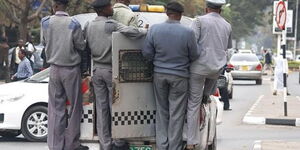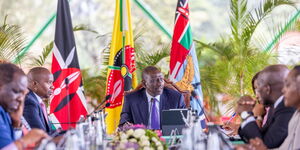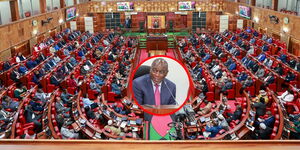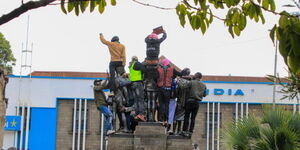Social media has been awash with campaign posters of retired President Mwai Kibaki. In the recent past, Kenyans have been grappling with the high cost of living and agitating for intervention from the government of the day.
It is amid this that some Kenyans chose to reminisce about how life was under President Kibaki by sharing the posters but one thing caught their eyes.
The poster was from his 2002 presidential campaign when he ran against President Uhuru Kenyatta.
The 2002 campaign and election marked a major milestone in Kenya's history, ushering in what is popularly known as the Narc revolution that introduced expanded democratic space and unprecedented economic development.
Kibaki’s biggest advantage at the time was that he had a celebrated career in government and his competitor was a political novice.
In the campaign poster which has gone viral, Uhuru was labelled untested, untried, unelected and inexperienced.
Fast forward to 2021, a section of Kenyatta’s critics say Kenyans should have heeded Kibaki’s warning.
The poster invited a comparison between the two presidents and how they helped steer the country.
According to data from the Kenya National Bureau of Statistics and Kenya Roads Board, Kibaki’s administration built 98,451km of roads with Ksh 185 billion while Kenyatta’s did 80,757 until 2019 using Ksh 927 billion.
Uhuru’s government tarmacked 6,000km of roads while his predecessor did 2,300km.
In terms of public debt, Kenyatta’s administration will have borrowed at least Ksh 7.6 trillion to implement his manifesto after inheriting slightly more than Ksh1.89 trillion in June 2013 from the Kibaki government.
A comparison between Kenyatta's and Kibaki’s tenure in the last seven years highlighted that Kenyatta's administration has not seen a consistent uptick in tax to GDP ratios.
In the seven years to the end of Kibaki's term, the increase in tax revenue largely kept up with economic growth. Kibaki's tenure saw Tax to GDP maintained at 22%, to 23.1% between 2007 and 2013.
In Kenyatta's tenure, the curve has fallen with Tax to GDP declining from 20.1% to 14% between 2013 and 2020.
{"preview_thumbnail":"/files/styles/video_embed_wysiwyg_preview/public/video_thumbnails/VK-n1n-03dc.jpg?itok=2u3NYEJh","video_url":"https://www.youtube.com/watch?v=VK-n1n-03dc","settings":{"responsive":1,"width":"854","height":"480","autoplay":0},"settings_summary":["Embedded Video (Responsive)."]}












